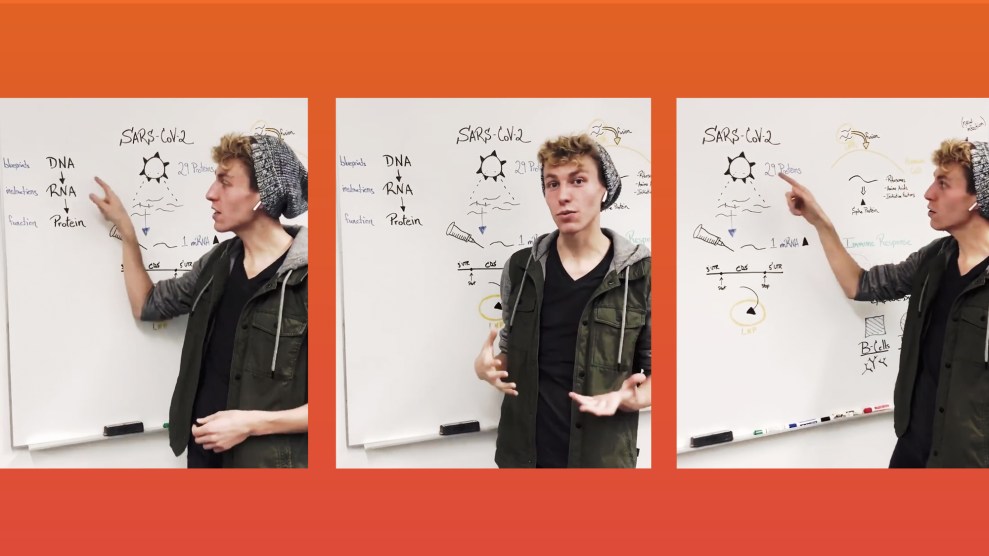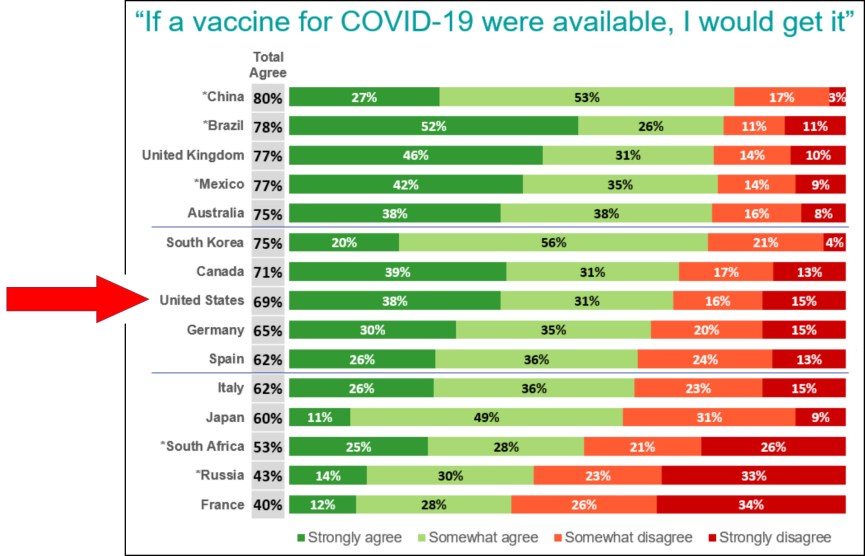
MoJo Illustration/Rob Swanda/Twitter
Better science communication can help combat the coronavirus pandemic. But as Mother Jones has reported since the beginning of the outbreak, scientists are frustrated by the lack of coordination and coherence in the Trump Administration’s public health messaging. “The government is missing a huge opportunity in not using social media as a means to get people aligned on COVID messaging,” a microbiologist Jessica Malaty Rivera told us in November. “Science communication just can’t be an afterthought,” said Yale epidemiologist and science messaging expert Saad Omer.
The Trump administration could learn a thing or two from Rob Swanda, a 26-year-old PhD student at Cornell, whose social media talents have earned him overnight science communication stardom.
When Swanda first created his viral video explaining the mRNA technology used in two coronavirus vaccines, he had a smaller audience in mind: his parents. “My mom is a hairstylist,” he told me on a recent Zoom call. Her clients were asking how the vaccine worked. He knew he could help them understand things clearly. “So you can imagine my shock that it has been seen by over 3 million people,” he said.
The video is an energetic and simple explainer of how mRNA, a new genetic technology, is being used in both the Pfizer and Moderna vaccines. Using a whiteboard, Swanda explains complex science in a way that has connected with over 4 million people so far.
Explaining jargon like “mRNA,” “spike protein,” and “lipid nanoparticle”, Swanda breaks down fears about the vaccine. “Being cautious of how the thing how the mRNA vaccine works is very reasonable, it’s a new innovation,” he says. “But if we just only relied on the old technology, like the attenuated or weakened version of the virus, we’re still waiting on those clinical trials to end, so how many more months are we going to be waiting?” While mRNA isn’t new in the newest sense (mRNA vaccines have been development for the last decade or so), it’s never been utilized on such a massive scale. And because the mRNA process eliminates the need for labs to grow a protein and then inject it—the mRNA teaches your body to make the protein itself—it cuts out a time-consuming production step in traditional vaccine manufacturing.
Here I describe a brief overview of how the Pfizer/BioNTech or Moderna mRNA vaccines work. Taking a vaccine is one’s personal choice, and I hope this video can help someone make that decision rooted in science. pic.twitter.com/ZjFH0DH5ca
— Rob Swanda (@ScientistSwanda) December 7, 2020
So far, feedback has been good. “I was pleasantly surprised that like 99.9 percent of everything has been super positive,” he says. But there’s still that .01 percent. Some commenters accused him of “listening to music” in his AirPods, or claimed that he “was being paid by these companies.” (A few even insinuated that Rob was a pawn of Bill Gates.)
But that hasn’t dissuaded Swanda from the task at hand. Between the pandemic and an encroaching climate crisis, science is increasingly part of our everyday lives, and Swanda believes that he and his peers can use viral social media communication to help. “The connectedness of this new generation coming into science is going to be super critical for pushing out new research that’s going to span multiple disciplines,” he says. “We can use that.”
Check out more of Swanda’s science explainers on YouTube.















